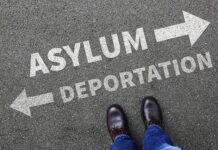• Puerto Vallarta was not originally created for modern tourism.
• It turns out that the original population was several tribes of Aztec Indians.
• They dedicated themselves to making cultural and commercial relations along the Pacific coast.
• The Bahía de Banderas (Bahía de Banderas) and the Valle de Banderas (Valle de Banderas) were named by the Spanish when Hernán Cortés’ nephew was traveling in this area.
• The city that is now Puerto Vallarta began when businesswoman Guadalupe Sánchez set up a trading post on the banks of the Cuale River to supply salt to the gold and silver mines in the mountains towards Guadalajara.
• Puerto Vallarta was named in honor of Don Ignacio Luis Vallarta, a well-known governor of the state of Jalisco.
THE NIGHT OF THE IGUANA AND THE PUERTO VALLARTA BOOM:
• International attention set eyes on Puerto Vallarta for the first time after US director John Huston decided to shoot the movie “The Night of the Iguana” in Mismaloya.
• The film starred Richard Burton, Ava Gardner, and Deborah Kerr.
• Based on a drama by Tennessee Williams, the filming of this movie was the initial impulse that would place Vallarta in the eyes of the world as the fashionable place at that time, and more than for its history, for its protagonists, and for the presence of Liz Taylor in Vallarta.
• The great romance between Liz and Richard, which began in ‘Cleopatra’, was by then known to all, ‘and he brought the actress to Vallarta to be close to him.
• He bought the Kimberly House in Gringo Gulch and moved into it. Later, Burton bought the property across the street and later joined them with the famous bridge over Zaragoza Street. ‘
• Why Puerto Vallarta? John Huston in his book ‘An Open Book’ wrote that while looking for locations for the film he met in Los Angeles, California, the engineer Guillermo Wulff, who proposed that the filming be done in Mismaloya; the director had already been to Puerto Vallarta twice, so he decided to shoot after visiting the site.
• The film was shot almost entirely in Mismaloya, except for some scenes that were filmed at the Paraíso hotel and on a street in Puerto Vallarta.
• The director had rented luxurious residences in the port and every morning they met in Playa Los Muertos to go to the set in a boat because the road had not yet been built.
AFTER THE MOVIE:
• John Huston, after finishing the film, made the decision to settle in the primitive Las Caletas, within an ejido of the Chacala Indians, about 15 minutes by sea from Boca de Tomatlán.
• Leased the land for ten years, with an option for ten more years, and after that period, both the land and everything he had built would pass to the indigenous community.
• Huston enjoyed the many years he lived in Puerto Vallarta
• Elizabeth Taylor and Richard Burton also stayed in town, made friends, enjoyed the party, loved the privacy of the place.
• They had a little more freedom than in other parts of the world, they could walk around town, go shopping, bathe on the beach without so much harassment from fans and journalists.
• In fact, they became part of the local community and participated in community work, donations, and also in actions as volunteer promoters of the city.
REASONS TO LOVE PUERTO VALLARTA:
The beaches:
• There are more than 26 beaches in the Bay of Banderas.
• One of the most famous is Los Muertos beach
• If you are looking for a beach with more privacy, there is Garza Blanca
• For fans of water sports there is Playa de Oro
• For diving you can visit the Los Arcos National Marine Park.
The Malecon (boardwalk):
• It has a beautiful row of sculptures in bronze, iron, or resin.
• Has many works of art that various artists have worked to adorn the landscape.
• There are many shops for shopping
• And on the boardwalk you will find some of the best restaurants in Puerto Vallarta
The food:
• It is a mix of international haute cuisine with the typical delicacies of the area.
• Among the dishes that you have to try, the pescado embarazado (pregnant fish) stands out, which is nothing more than a play on words to refer to roasted fish on a stick.
• There is a great variety of fish and seafood dishes, such as ceviches, the one of local attraction is that of mojarra, the pescados zarandeados, and fish meatballs.
• Being in Jalisco, you can also find the typical tortas ahogadas.
• In addition, the International Gourmet Festival attracts chefs from around the world who, together with local food gurus, create great works of culinary art.
Sports and adventure:
• From kayaking, jungle trekking, snorkeling, water skiing, horseback riding, skydiving, rappelling, zip lines, safaris, and much more.
Among crocodiles and sea turtles:
• The Puerto Vallarta Botanical Garden has 3,000 different species of plants, in which an incredible variety of birds and butterflies live.
• On the other hand, crocodiles, turtles, and many seabirds are in the labyrinth of channels in La Tobara, essential for nature lovers.
• The boats sail slowly along the canals and mangroves of Puente El Conchal, on the outskirts of San Blas, approximately three hours from Marina Vallarta.
• Finally, the Puerto Vallarta Zoo, in Mismaloya, has more than 100 species of animals throughout its five hectares: the coyote, the jaguar, and the puma, and others from the rest of the world, such as lions, leopards, camels, zebras, and Bengal tigers.
Downtown Puerto Vallarta:
• It is one of the most beautiful, since its colonial architecture makes it very picturesque. There are bars, restaurants or antique shops.
The Friendliest City:
• One of the great reasons people always come back and fall in love with Vallarta is because of its people.
• Vallartans are super friendly, cool, respectful, warm.
• In addition, Puerto Vallarta is a Gay-Friendly city and one of the best LGBT destinations in the world.
Above all, reliable:
• Due to strict compliance with preventive protocols, Puerto Vallarta was awarded the Safe Destination seal, awarded by the World Travel and Tourism Council (WTTC).
• The priority is to keep visitors safe, which is why all the measures indicated by the health authorities and necessary filters are respected so that travelers return home healthy and safe.
Published by Martha Debayle › guerrerohabla.com
Receive the PVDN morning newsletter and exclusive content by becoming a PVDN Supporter, learn more here









